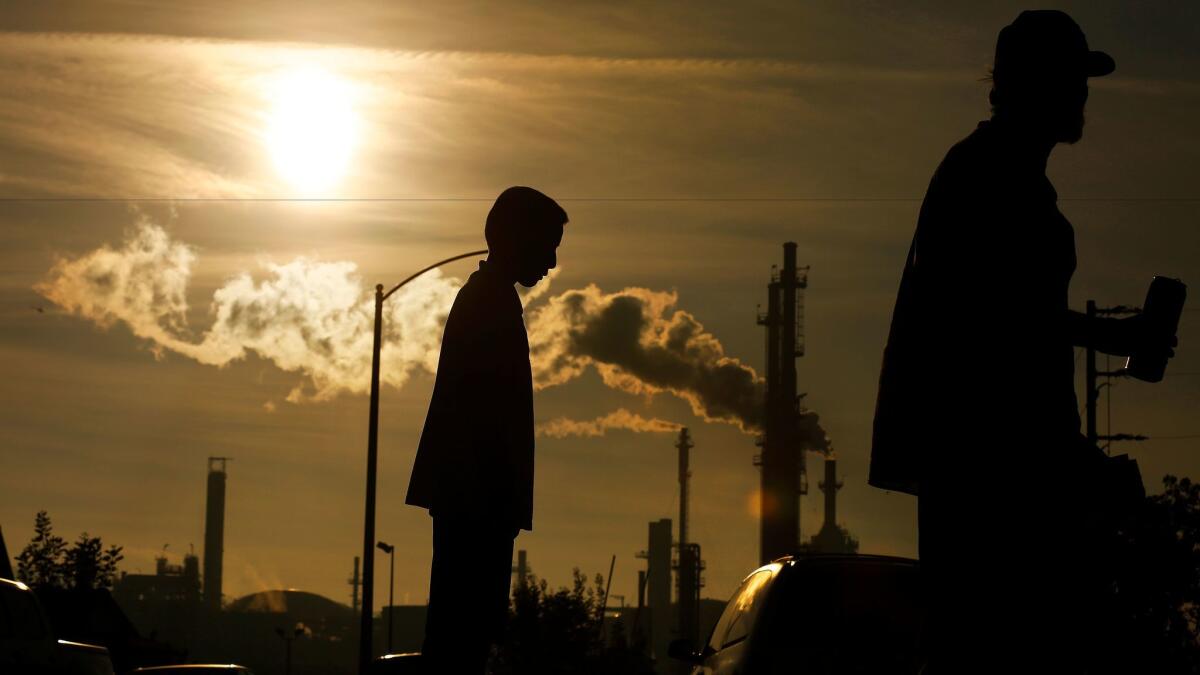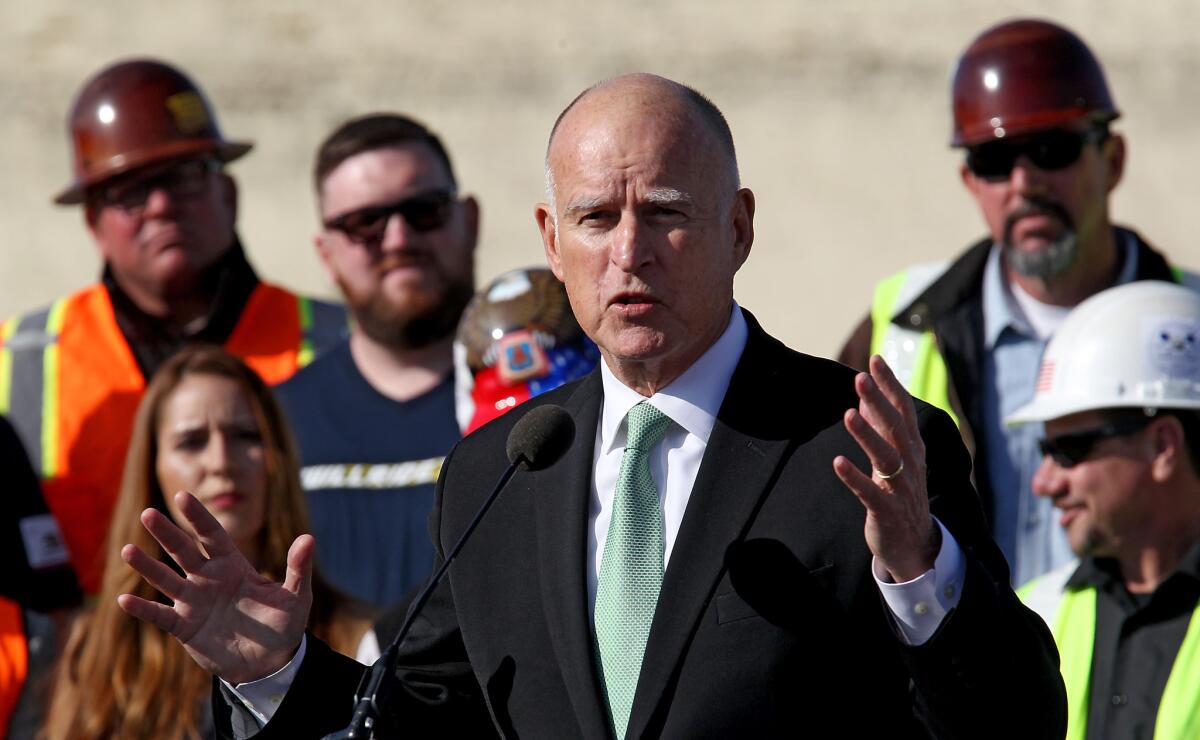The immediate threat to California’s climate-change fight isn’t Trump, it’s this

- Share via
Reporting from Sacramento — With President Trump in the Oval Office, California officials are bracing for the possibility that the new administration will undermine the state’s landmark policies on climate change. But the more immediate threat isn’t coming from Washington; it lies in a lawsuit that has been slowly winding its way through state courts.
The 4-year-old legal challenge pursued by the California Chamber of Commerce and a collection of business interests argues that the cap-and-trade program represents an unconstitutional tax. The system, intended to create a financial incentive to reduce greenhouse gas emissions, requires companies to purchase permits to pollute.
For Gov. Jerry Brown and the environmental community, the lawsuit has been a ticking time bomb that could eliminate a key source of revenue and undermine a program touted as an international model for fighting global warming.
State lawyers have the chance to defuse the situation Tuesday in an appeals court hearing in Sacramento. A decision could be released within the next three months, but it likely won’t be the final word — the losing party can still appeal to the California Supreme Court.
Either way, the result will ripple outside the state’s borders as politicians around the world consider the best way to reduce greenhouse gas emissions. California is trying to expand its program’s reach by partnering with other jurisdictions, teaming up with Quebec two years ago and Ontario a year from now. Chinese officials have studied the state’s system as they plan their own policies.
And with climate action unlikely in Washington under Trump’s administration, environmentalists are rallying around California’s cap-and-trade program because the state is among the few places in the country pursuing an ambitious agenda.
“California’s leadership, along with the northeastern states and the other West Coast states, is more important now than ever,” said David Doniger, director of the climate and clean air program at the Natural Resources Defense Council.
The legal dispute surrounding the cap-and-trade program stems from its origin.
In 2006, then-Gov. Arnold Schwarzenegger and lawmakers approved legislation requiring the state to reduce its emissions to 1990 levels by 2020, then tasked the California Air Resources Board to devise a plan to reach the goal.
The result was cap and trade, which auctioned off its first permits in 2012. Revenue from the auctions, which has ranged from hundreds of millions of dollars to nearly $2 billion a year, is then spent by lawmakers on initiatives intended to further reduce emissions. One of those projects is the $68-billion bullet train from Los Angeles to San Francisco.
All of this activity, state officials argue, falls within the government’s authority to regulate industry.

Opponents disagree, noting that the state is collecting revenue through a program that wasn’t created with a two-thirds vote in both houses of the Legislature, the threshold needed to approve taxes.
“What they’re doing is simply outside the law,” said Loren Kaye, president of the California Foundation for Commerce and Education, a think tank affiliated with the Chamber of Commerce.
In addition to the chamber’s original lawsuit, the Pacific Legal Foundation, a conservative group, joined the fight on behalf of several businesses, including a tomato processing company and a trucking association.
Even if the state wins the case, the cap-and-trade program wouldn’t be completely out of the woods.
Because regulators created the program under legislation that set a target for reducing emissions by 2020, there are questions about whether cap and trade would expire once the date is reached.
“The big question is what comes after 2020,” said Michael Wara, a Stanford law professor who focuses on energy and the environment.
To erase that concern, Brown has asked for lawmakers to pass a new measure extending the program with a two-thirds vote, safeguarding cap and trade for the future. One piece of legislation has already been introduced, but negotiations are likely to be complex.
“It’s one of the largest programs impacting the California economy,” said Rob Lapsley, president of the California Business Roundtable, which represents the state’s largest corporations. “The stakes are huge.”
To read the article in Spanish, click here
Twitter: @chrismegerian
ALSO:
California’s cap-and-trade program faces daunting hurdles to avoid collapse
California’s cap-and-trade program is key to Gov. Jerry Brown’s agenda
Updates on California politics
Updates from the campaign trail
More to Read
Get the L.A. Times Politics newsletter
Deeply reported insights into legislation, politics and policy from Sacramento, Washington and beyond. In your inbox three times per week.
You may occasionally receive promotional content from the Los Angeles Times.











